Introduction
The ultimate origin of the Hindu temple dates back to Vedic times, i.e., 1500–700 B.C. when religion was renowned as one of the most important social structures in a society. Initially, caves were shrines, but gradually these caves were upgraded, and materials like timber, plastic, bricks, mud, and clay were used to build the temples. This proved to be a new start to the era of temple architecture in India, which slowly flourished during the Gupta reign. Among the temples built in this era, the Narayana style prevailed in most of the Himalayan and Vindhya ranges, thus becoming known as hill architecture.
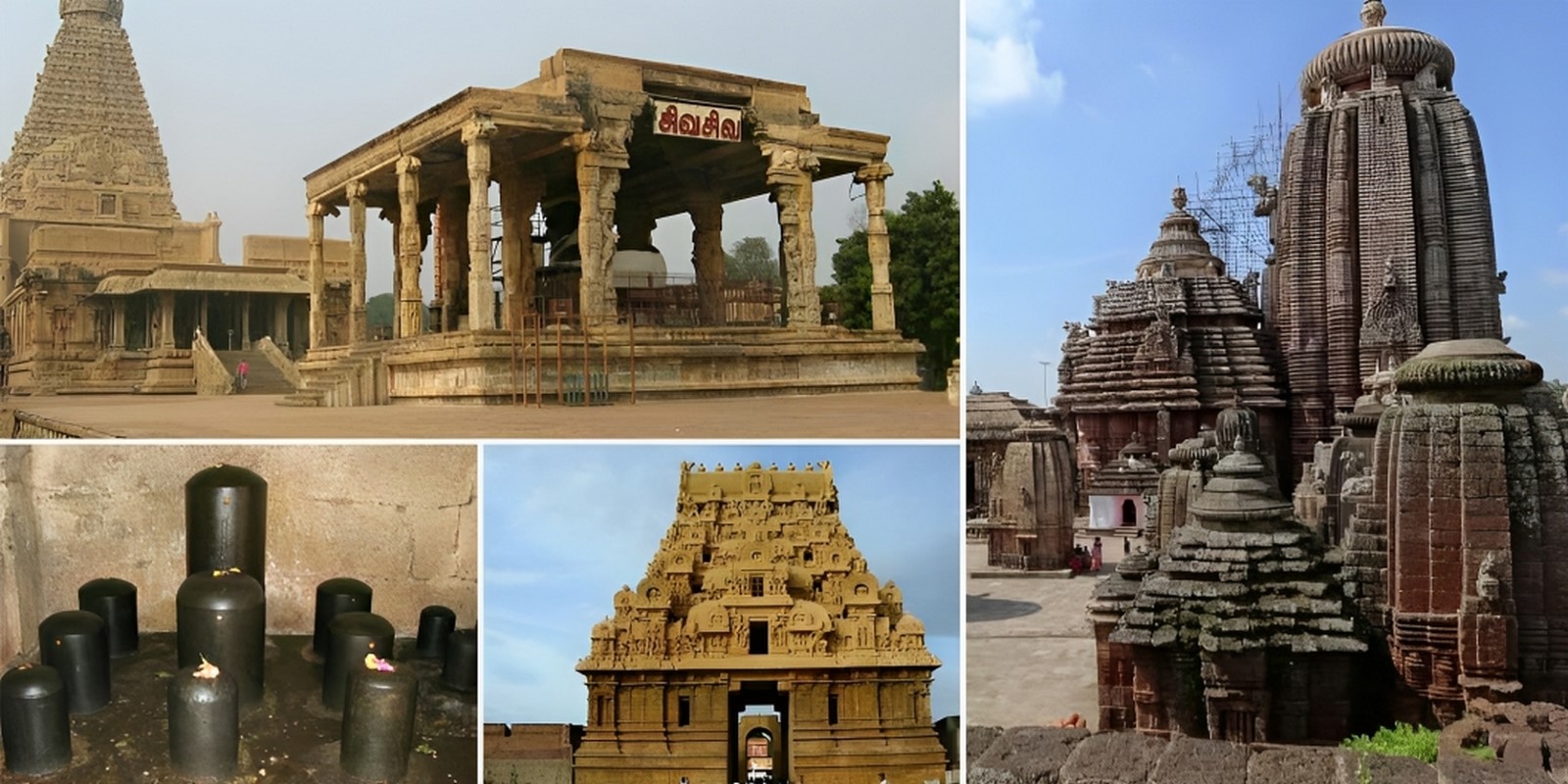
The temples built around that reign were usually located amidst deep, green, forested land. The basic form of a temple consists of:
- SANCTUM: Usually known as the Garbhgriha or the ‘Womb House’, the sanctum is a small cubical room inside the temple with a single entrance. This room serves as the focal point of the temple, where the idol of God/Goddess resides.
- ENTRANCE: The entrance to the temple buildings is accompanied either by a portico or is followed by a colonnade hall. The area is known as ‘Mandapa’ and is used for gatherings as it can easily house a group of followers.
- SHIKHAR: Shikhar is also seen as the free-standing spires that project out of the temple building and are a defining feature of the temple buildings. In North India, this shikhara is replaced by a barrel-vaulted roof with several openings. These shikharas are known as Vimana in the south.
- VAHAN: Vahana, as the name suggests, is a chariot or any other mobile structure mounted by the temple deity. One of the best examples of Vahana in a temple can be seen in the Sun temple Konark with a huge chariot as the vahan inscribed on the temple’s outer wall. The Vahana is generally placed along an axis with the sanctum.
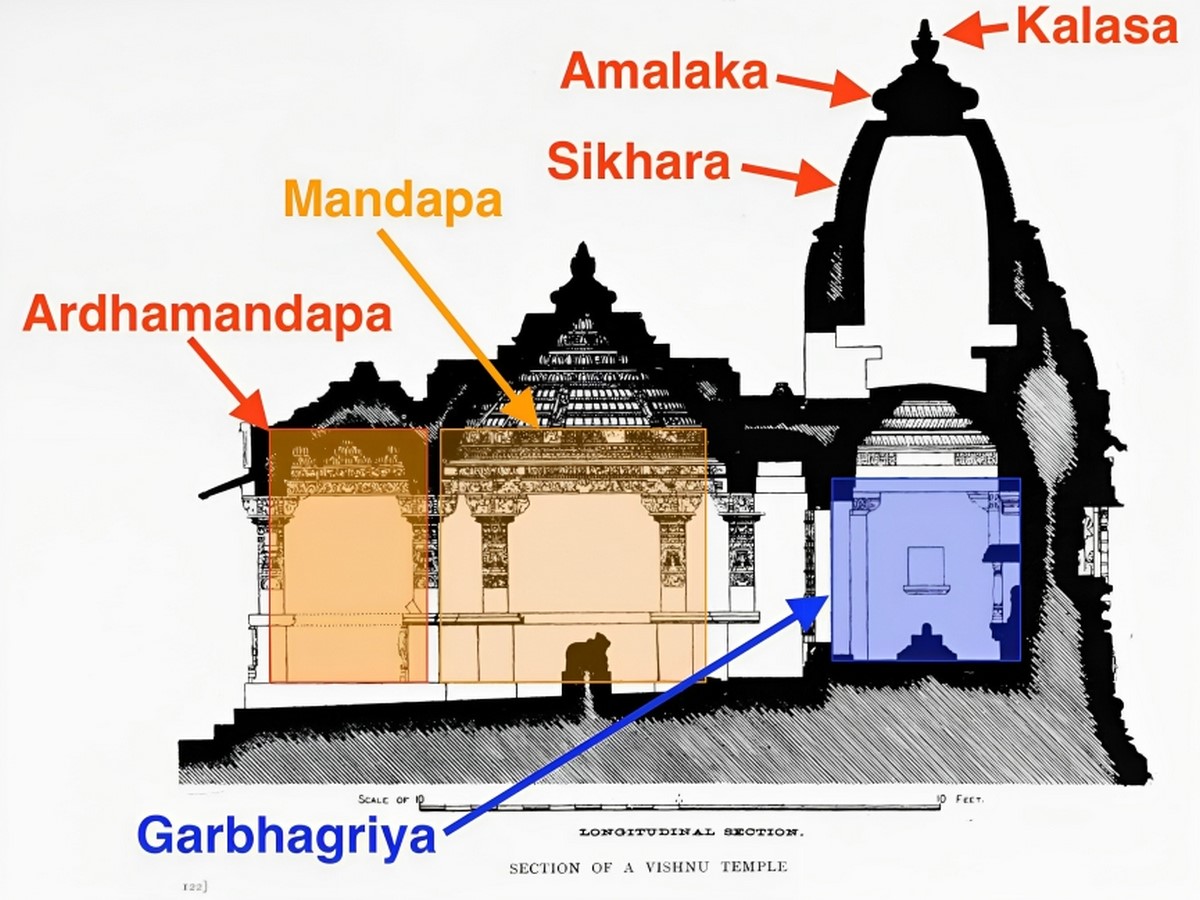
The sculptures and ornamentations in the temple buildings usually depict scenes from various mythological stories and folklore. These icons and sculptors depict a particular meaning when placed strategically. As can be witnessed in the sculptures of ‘Dwarpals’, which are inscribed along the temple entrances, justifying their name i.e., Gatekeeper. Thus, these features make the temple architecture in India a sacred one. There are various examples of such temples in India.
- TUNGNATH TEMPLE, UTTARAKHAND
Located amidst the womb of the Tungnath mountain range, Tungnath temple lies in the Rudraprayag district of Uttarakhand. Being one of the Panch Kedar temples, Tungnath temple is dedicated to the Lord Shiva and stands tall at 3680m height above the mean sea level.
The historic temple is believed to have been built by Pandavas to pray to and ask forgiveness from lord Shiva for slaying their Kaurava Brothers. Built in the Vedic Age, the Tungnath temple stands as a symbol of the Nagara Architecture style and is built with stones, timber, and other naturally available materials. The entrance to the temple is welcomed by ‘Nandi’ which then leads into the main sanctum with Lord Shiva’s idol. The highest part of the temple has carved wood with 16 openings with a roof made up of stone slabs.
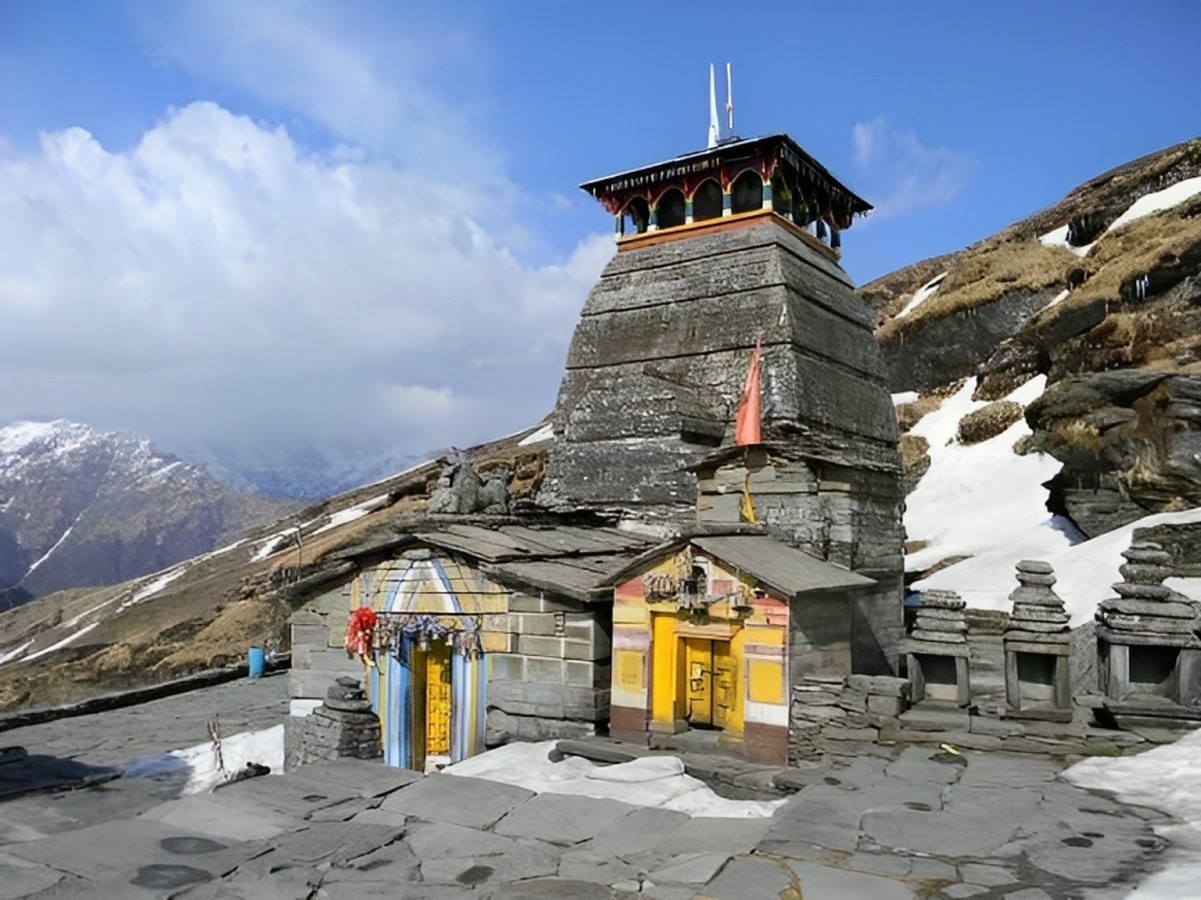
- HAMPI – THE ANCIENT VILLAGE
Hampi is an ancient town situated in the Bellary district of Karnataka. Located along the river Tungabhadra, Hampi is rich with several temples. The town is believed to have been a prosperous city of the Vijayanagar empire. Due to its rich history, the town was also declared a UNESCO World Heritage site.
One of the temples in this town is Virupaksha Temple, which is the oldest temple in Hampi. The temple has several pillared halls, towering gateways, and a rich interior with sculptures and images depicting mythological scenes. One of the most enthralling features of this temple is the stone chariot facing the village sanctum.
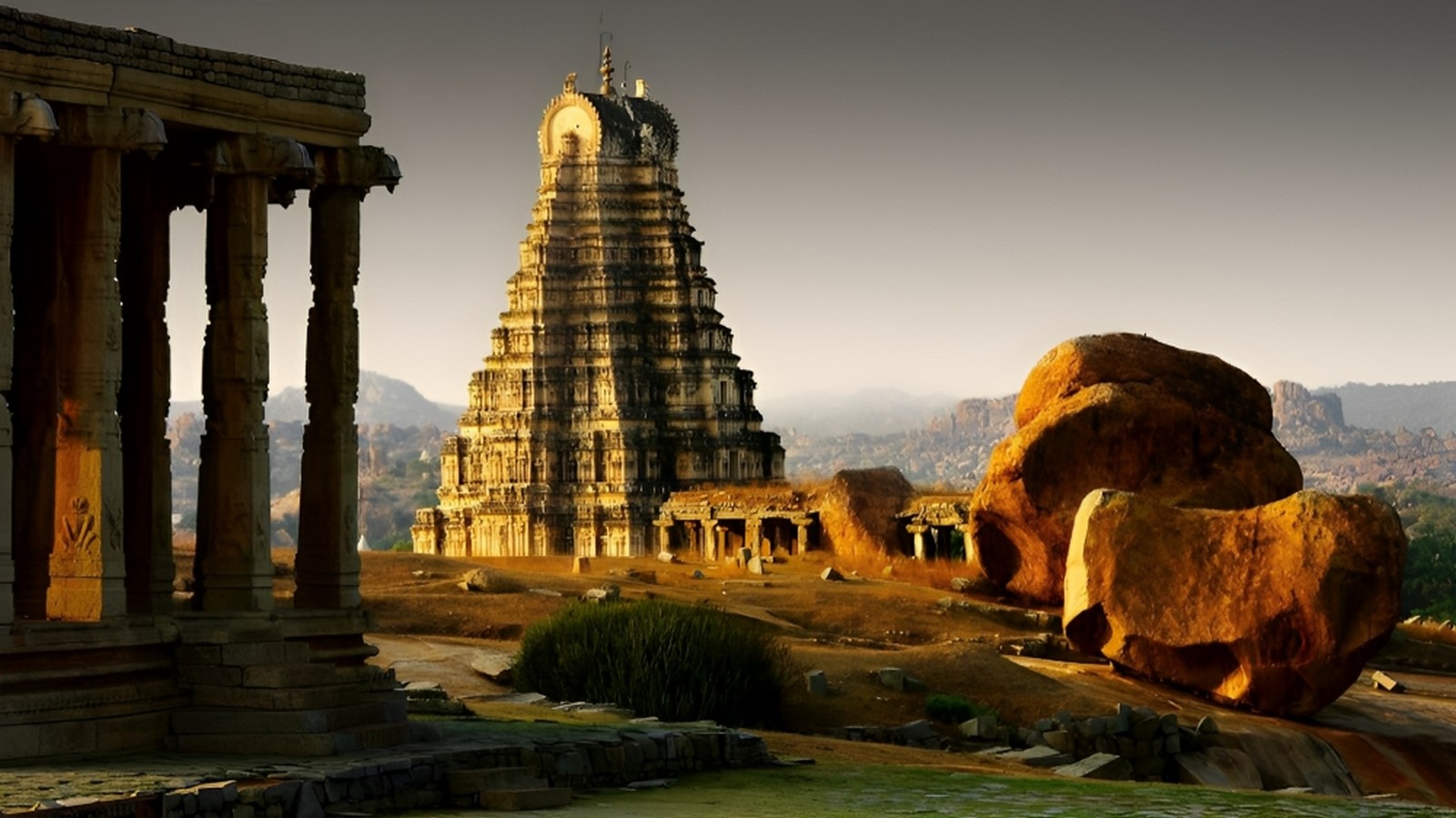
Monasteries
Monastry is the name given to a space used for spiritual activities by monks and nuns who have renounced the world. These monasteries are located far away from the world to embrace silence and tranquility in performing religious activities like prayers, chants, etc. India is also rich in the history of several monasteries established in the ancient period. Monastery of Buddhism holds the oldest historical evidence, and the first monastery is believed to have been built around 400 BCE. Many educational institutions also emerged during the Buddhist period, as Buddhist monasteries promoted learning life lessons. Some of the most renowned monasteries in India are:
- TAWANG MONASTERY, ARUNACHAL PRADESH:
Located 2km away from Tawang town in Arunachal Pradesh, Tawang Monastery stands at a height of 3000m above mean sea level. Tawang monastery is surrounded by Tibet from the North and Bhutan from the South West.
Being the oldest monastery, Tawang Monastery depicts the architecture prevailing at that time. The entrance to the monastery building is welcomed by a large gateway. The building has an assembly hall, museum, library, school, and residential quarters for the monks and nuns. Military posts are set up in the monastery for the combat practices of the monks. The greenery of the surroundings intermixed with the stone masonry of the building provides a pleasing look to the watchers. The other materials used are Bamboo or wood, making the structure safe from seismic hazards.
The two-storeyed building, also called ‘Dukhang’ is the most prominent part of the monastery. The building contains an assembly hall on the ground floor and residential spaces on its first floor.
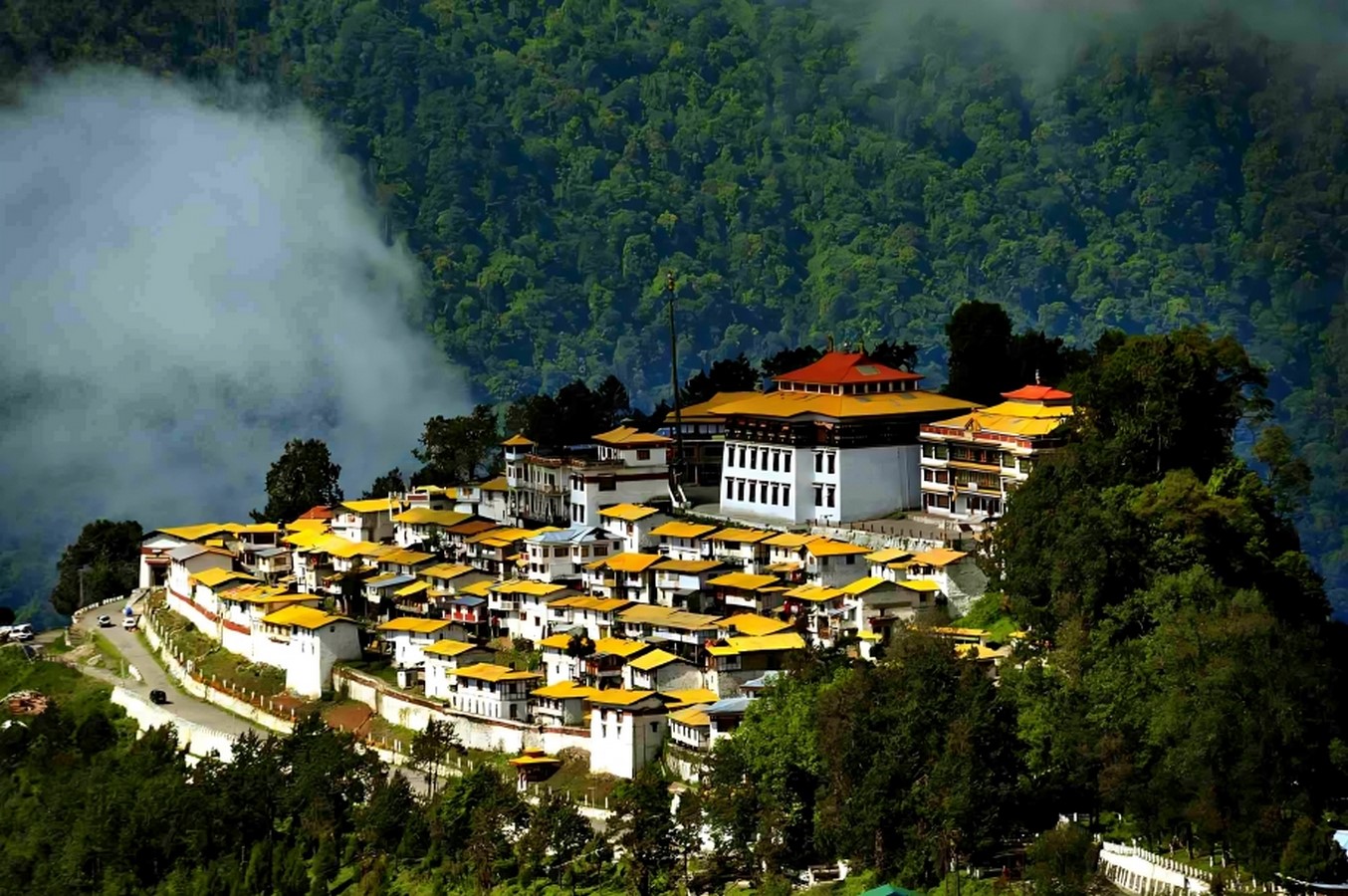
- HEMIS MONASTRY, LADDAK
Hemis Monastery is one of the oldest monasteries in Laddakh and is situated 45 km away from the city. Hemis very well portrays the Tibetian architecture style with huge courtyards, assembly halls, and library buildings with spiritual books and manuscripts for the monks. The temple complex consists of seven buildings with a main prayer hall, a library, a museum, and residential quarters for the monks.
‘Tshogkhang’ or the main prayer hall, houses the golden statue of Buddha. Beautiful murals are ingraved on the walls and ceiling of the prayer hall, depicting scenes from Buddhist mythology. The library, also known as ‘Pethub Khang’, has a collection of several old manuscripts and books, containing a whole information about the Buddhist religion. The residential quarters are well connected to other spaces in the main building so that monks can easily access the living quarters. Also, the courtyard area in the monastery is quite huge and is capable of holding large crowds as seen in festivals and spiritual occasions.

Thus, we can easily witness the influence of temple architecture in India. The building belonging to this particular style holds quite a great reverence in this modern age.
References:
- Origin of Indian Temple Architecture (2010, Indian Culture and Arts) blessingsonthenet, Available at: https://blessingsonthenet.com/indianculture/sections/80/origin-of–indian-temple-architecture (Accessed: 4 September, 2023)
- Temple Architecutre and Sculpture (1961, NCERT) ncert.nic, Available at: https://ncert.nic.in/textbook/pdf/kefa106.pdf (Accessed: 4 Septemebr, 2023)
- Tungnath Temple l History, Architecture and Facts (April, 2020) Shivamahadeva, Available at: https://www.shivamahadeva.net/2020/06/tungnath-temple.html (Accessed: 4 September, 2023)
- Ther story of Hampi, The forgotten empire / A Heritage in ruins (2013) Archinida, Available at: https://archindia.in/the-history-of-hampi/ (Accessed: 5 September, 2023)
- Monasteries (19 December, 2022) tutorialspoint, Available at: https://www.tutorialspoint.com/monasteries (Accessed: 5 September, 2023)
- India in Pics: 10 Most Beautiful Monasteries in India You must visit (12 September, 2022 by Anjali Krishnan) thebetterindia, Available at: https://www.thebetterindia.com/297071/beautiful-buddist-monasteries-in-india-to-visit-tawang-hemis-namdroling-thiksey/#:~:text=Mindrolling%20Monastery%2C%20Uttarakhand&text=One%20of%20the%20largest%20Buddhist,dedicated%20to%20the%20Dalai%20Lama. (Accessed: 5 September, 2023)
- Tawang Monastery (2013) indianculture, Available at: https://indianculture.gov.in/stories/tawang-monastery (Accessed: 5 September, 2023)
- Hemis Monastery (2013) tourmyinida, Available at: https://www.tourmyindia.com/states/ladakh/hemis-monastery.html (Accessed: 5 September, 2023)
- The Hemis Moastery – Ladakh (29 February, 2020 by Agni Amrita) taleof2backpackers, Available at: https://www.taleof2backpackers.com/the-hemis-monastery-ladakh/ (Accessed: 6 September, 2023)

















